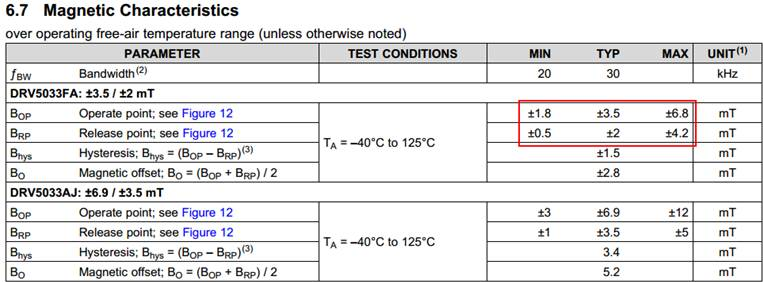Hi,
I have some problems in use DRV5033.
The following specifications table,The magnetic flux moves at 1.8mT~6.8mT and recovers at 0.5~4.2mT.
This range is relatively large, and the action and recovery points are also coincident.
When we applied the design, can we set the magnetic flux of this magnet?
We tested the magnetic flux of the Hall element about 4.9mT.
According to the following parameter table, if the operating point of the Hall element is 5.5mT, is it impossible to operate normally?
Because Bop and Brp point are overlap.
What is the magnetic flux distribution in mass production? How do I know this data?
thanks.



